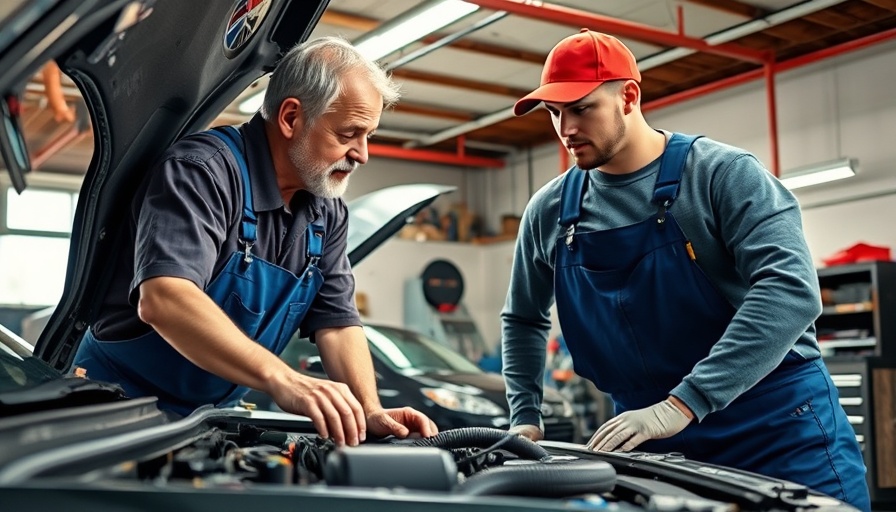
Understanding the Impact of Accidents on Uber Driver Eligibility
Accidents can happen to anyone, but for Uber drivers, the consequences extend beyond the immediate aftermath. With over 80% of Uber drivers relying solely on this platform for their income, it’s essential to grasp how an accident affects their eligibility to continue driving. In this article, we delve into Uber's policies regarding accidents, how fault is assessed, implications of insurance and background checks, and the crucial steps drivers need to take post-accident.
The Statistics Behind Road Safety
The National Highway Traffic Safety Administration reports around 42,000 road fatalities in the U.S. during 2022. This staggering figure underscores the importance of safety for ride-share drivers, so when accidents occur, many drivers face the daunting question: Can I still drive for Uber after an accident? The answer is multifaceted and hinges on several factors, such as the nature of the crash, fault determination, and Uber's policies on driver conduct.
Uber's Accident Reporting Procedures: What You Need to Know
Uber has established specific procedures for reporting accidents. According to the company, drivers must report any incidents either through the Uber app or directly to their safety team usually within 24 hours. Failing to do so can result in the suspension or even termination of driving privileges. Uber's commitment to transparency and safety means that all reported accidents are reviewed extensively, particularly if there are injuries or property damage involved.
Assessing Fault: How Uber Decides
Once an accident occurs, the next significant concern for drivers is how fault will be assessed. Uber takes a comprehensive approach, incorporating driver reports, police findings, and insurance evaluations. If a driver has a history of traffic offenses or has been deemed at fault in a previous incident, it may affect their eligibility significantly.
To ensure clarity, it’s vital for drivers to understand what constitutes a 'bad driving record.' This includes multiple traffic violations, DUIs, or past accidents that incurred claims or citations. Such infractions can jeopardize their ability to continue driving for Uber, depending on the severity and frequency of these incidents.
Insurance Implications After an Accident
The role of insurance cannot be overlooked in the conversation about driver eligibility. Following an accident, drivers must delve into their insurance policies to understand their coverage. It's essential to clarify which insurance is applicable for Uber rides, as it can differ from personal vehicle insurance. Moreover, drivers may want to consult an automotive insurance insider to grasp the nuances of how their insurance impacts their Uber driving record.
Immediate Steps to Take After a Crash
Knowing the correct actions to undertake immediately after an accident can make a significant difference in a driver’s ability to continue working. This includes ensuring safety first—checking for any injuries, calling emergency services if necessary, and documenting the scene with photos and witness accounts. Additionally, drivers should reach out to their insurance companies promptly to report the incident.
Consulting a legal professional can be beneficial, particularly if the crash wasn't your fault. A legal expert can assist in navigating insurance claims and help maximize compensation while ensuring that you understand how the accident may influence your eligibility as an Uber driver.
Driving for Uber with an Accident on Record: What’s Possible?
Many drivers frequently wonder if they can continue driving for Uber with an accident on their record. The variances in this policy depend largely upon the nature of the accidents. Minor incidents that result in no violations or claims generally do not considerably impact a driver’s standing. However, if the accident resulted from a serious fault or if there are multiple incidents, this reality may change dramatically.
Under Uber’s policy, if it’s determined that the driver was at fault, eligibility can face suspension or revocation pending review. This serves as a crucial reminder for drivers to maintain safe driving practices not only as a legal requirement but also as a means to preserve their livelihood.
Conclusion: Staying Informed is Key
For Uber drivers, accidents can pose significant risks—not just physically but also to their careers. By understanding the impact of accidents on driver eligibility, along with the processes Uber follows, drivers can continue to support their livelihoods while prioritizing safety on the roads. Knowledge is power; staying informed will prepare drivers for the unexpected challenges that come their way.
Moreover, should you wish to delve deeper, consider exploring automotive insurance insider tips and consult auto repair specialists for guidance regarding car safety and maintenance related to ride-sharing. Being proactive can pave the way for smoother driving experiences that help maintain eligibility with ride-share services.
 Add Row
Add Row  Add
Add 




Write A Comment